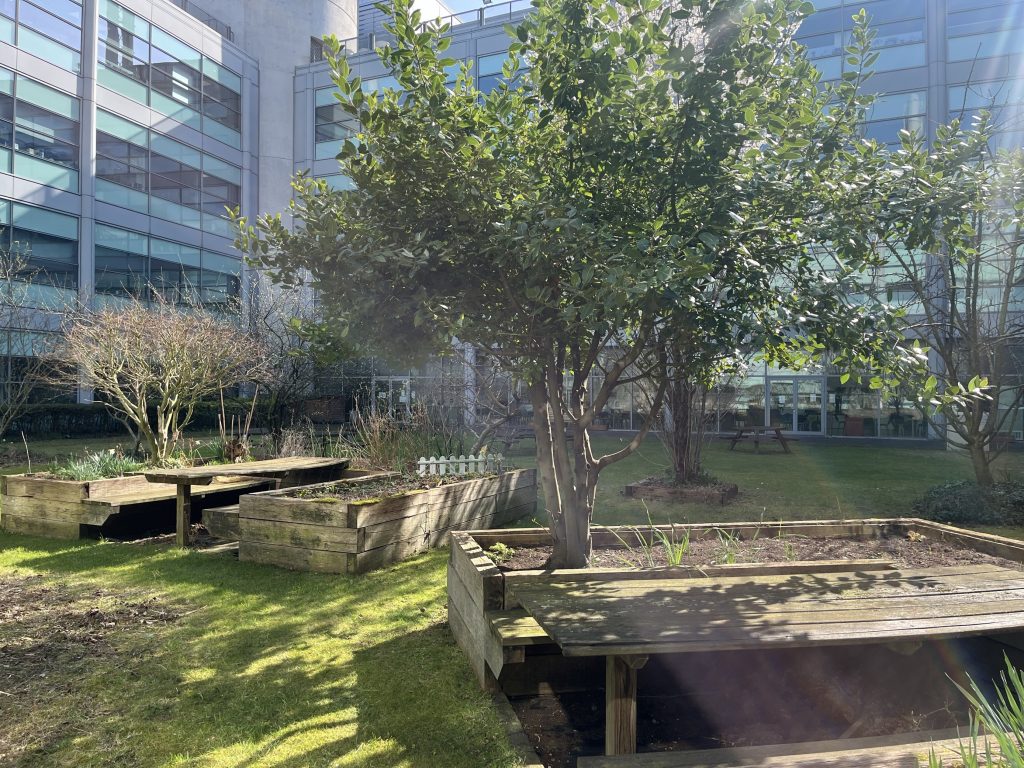
Building a Nature Positive Campus
Written by Freddy Crisp, Undergraduate Biology student in the Faculty of Biology, Medicine and Health for our Environmental Sustainability issue of the Faculty Newsletter.
When it comes to tackling the biodiversity crisis, green spaces on campus are being managed with a traditional landscaping mindset, with a focus on monocultural lawns and picture-perfect flower arrangements. The results may look pretty, but they can be devastating for native species. Grass lawns on campus are wasted space, hosting only a single type of plant species and limiting potential for growth and biodiversity. The University has introduced small-scale biodiversity initiatives like bird boxes and bug hotels, but their success and impact are limited.
A nature positive campus needs more than small fixes; we need to change our mindset to make biodiversity a key focus point. But what does that look like?
At an institutional level, we need to move away from ornamental horticulture and focus on a commitment to meaningful biodiversity initiatives. That might include replacing monocultural areas with wild lawns full of native plant and animal species; promoting green and blue spaces; and working with external organisations to make informed decisions.
We also need to create more opportunities for staff and students to get involved with building biodiversity on campus. We should aim to increase awareness of biodiverse green spaces; thinking about how ecosystems function and evolve, and how we can help different species to flourish.
We already have some great examples to look to for inspiration at the University. Nestled in the Fallowfield campus, the Firs Botanical Gardens is a biodiverse area in a relatively small space – the team look after a hay meadow, pond, and woodland garden at the site.
I often hear the argument that making spaces more biodiverse can mean more work for maintenance teams. This isn’t the case. In the Michael Smith Quad, a low maintenance approach has produced one of the best areas on campus for biodiversity. It’s no coincidence that ponds are at the heart of both the Firs and the Smith Quad. Ponds are really important; they provide essential drinking water for species to thrive in urban areas. We need a range of green and blue spaces to encourage greater biodiversity across campus.
We need to start by putting biodiversity first. Looking to existing examples for best practices, encouraging awareness among staff and students, and committing to wildlife-friendly spaces can all set us on the right path to building a nature-positive campus.
Undergraduate Biology student Freddy Crisp has spent his time at the University getting involved with various sustainability projects, including the Tree Musketeers student society.
Further information:
- Read a recent update from the team at the Firs Botanical Gardens.
- Find out more about the Michael Smith Quad in the February 2025 update.
- Stay up-to-date with the latest in sustainability by signing up for the Faculty’s quarterly ES Newsletter. Email srbmh@manchester.ac.uk to join our mailing list.
- To find out more about Environmental Sustainability in FBMH, visit the Faculty’s intranet page, website or contact srbmh@manchester.ac.uk.

0 Comments